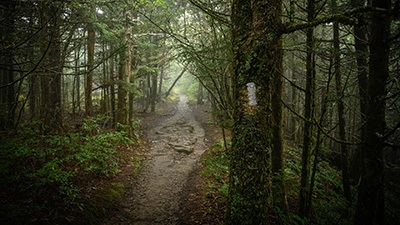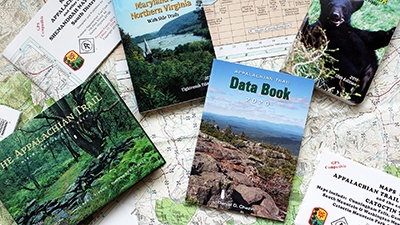by Alivia Acosta
Visitor Use Management on the A.T.
Outdoor recreation is increasing in popularity throughout the nation and the Appalachian Trail is no stranger to the trend. View points are flooded with visitors, campsites are expanding as more hikers look for tent space, and the tread of the Trail remains in need of constant armoring against the onslaught of feet that trod upon it. Yet, the increase in visitation on the Trail relates to the needs of the nation. Ensuring the “People’s Trail” remains protected while providing a meaningful hiking experience requires thoughtful and eclectic management planning.
When Benton McKaye first proposed An Appalachian Trail in 1921, he marveled at the healing factors of the landscape, explaining that even just the air along the Trail is a natural and national resource “that could save thousands of lives.” McKaye was right when he foretold that a growing urban population would increase the need for space to take a breath amidst the toils of life. Managing this vision amid increasing visitation, while ensuring the Trail (and the benefits it generates) remains available for future generations is of utmost importance.
Over time, an accumulation of experiences in land management from across the nation has helped to create a general understanding of Visitor Use Management (VUM) in public recreation areas. ATC adopted their most recent ATC VUM Policy in 2020. Maximizing the public’s connection to the outdoors while managing these opportunities is essential for best VUM practices. The Framework created by the Interagency Visitor Use Management Council (IVUMC) provides a consistent approach to VUM and streamline necessary discussions between land managers, non-governmental organizations and visitors. This Framework in combination with their new guidebooks in Monitoring visitor use and managing Visitor Capacity provides essential tools in legally defensible VUM practices.
With the variety of land managers along the Trail, the sliding scale framework provided by the IVUMC enables the development of management plans that are sensitive to varying degrees of visitor use. The Trail and Camping Committee (TCC) of the Appalachian Trail Conservancy’s Stewardship Council has been working on developing resources to implement important components of such a plan.
Cosmo Catalano, recent Chair of the TCC, reports that definitions of factors affecting the hiker experience have been completed for the three main settings on the Trail: Environmental, Social, and Management.
Trail segments of varying length will be referred to as opportunity Zones. Zone 1 begins with Federally Designated Wilderness and is in increasing order of impacts to the natural environment (Environmental), the social effects related to the number of visitors (Social), and the frequency of management presence (Management). Zone 5 represents the highest level of impacts and would be areas such as major trailheads or summit areas that are accessible by car.
Identifying the attributes of these settings and their corresponding zone will help Trail managers define VUM goals and identify best management strategies. Catalano states “Next VUM efforts at the club level will likely focus on working with land management partners and ATC staff to establish appropriate zones and possible methods to effectively track visitor use”.
VUM efforts are currently underway for trail segments on Franconia Ridge in New Hampshire, and the Triple Crown area in Virginia. In Georgia, the GATC and it’s Forest Service partners have also been taking action to manage visitor use.





